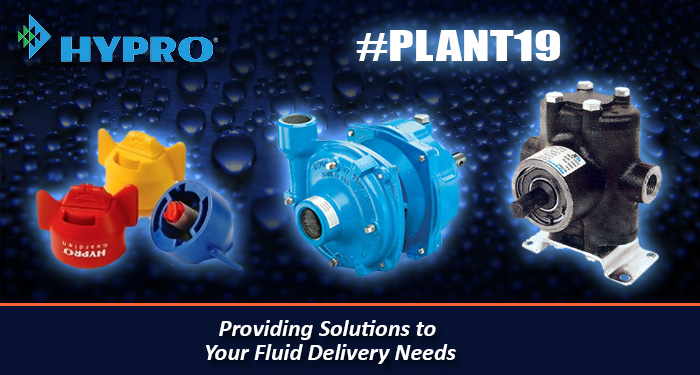Agricultural Sprayer Pump: A Guide to Different Pumps
Whether you're an "if it ain't red, leave it in the shed" or a "nothing runs like a Deere" fan, you'll agree that the parts that make up your equipment matter despite their color.
So when considering how you'll apply your chemicals, know your stuff. Don't punt when looking for a sprayer pump. Go into your search informed.
Like all other pieces of equipment from chemical nozzles to cattle chutes, sprayer pumps come in varying types and sizes. Read on to learn everything you need to know about the variety of sprayer pumps on the market.
Types of Sprayer Pumps
As you look at all of the pumps available, consider a handful of types of pumps.
As you do that, consider the varying methods of energizing the pumps. Do you want an electric sprayer pump? A gas-powered pump? Do you need a PTO?
This guide will help you determine the best pump for your particular needs.
Centrifugal Pump
Pumps come in two different basic categories: positive displacement and non-positive displacement.
As a kinetic pump, the centrifugal pump qualifies under the positive displacement category.
This pump has a shaft-driven impeller that rotates inside the casing. The impeller is a hydraulic component that rotates and adds velocity to pumped liquid
Picture a boat with its propeller. Now imagine that boat is going nowhere--it is stuck on something or anchored, and the propeller is still on. Water will run through the propeller and gain velocity because of the prop.
The impeller works the exact same way.
The impeller pulls water in and then increases its velocity depending on the speed of the impeller.
As a result, the centrifugal pump can provide some extremely high flow rates.
Additionally, again, much like a boat propeller, the impeller can be controlled by a throttle. The centrifugal pump has a throttle which can thus control the flow rate.
Unlike self-primed pumps, the centrifugal pumps must be primed.
Centrifugal Pump Energy Source
You can power a centrifugal pump in a few different ways.
- gear drive and belt/pulley PTO 540 rpm
- gear drive and belt /pulley PTO 1000 rpm
- belt/Pulley gas engine
- direct couple
- belt/pulley electric motor
As you can see, the centrifugal pump uses a variety of energy sources from the PTO to an electric motor.
Two Chamber Positive Displacement Diaphragm Pump
Unlike the centrifugal pump, the two-chamber positive displacement diaphragm pump is self-priming. It does not have an external priming system because it can prime the suction line all by itself thanks to its large reservoir around the pump casing.
This is how a two chamber positive displacement diaphragm pump works:
- The pump is energized.
- The pump retains water in the casing
- The pump sucks air into the suction as water goes out
The two-chamber positive displacement diaphragm pump is not a submersible pump. Rather it sits on top of the liquid being pumped out.
This pump has two flexible diaphragms, parallel to each other on the sides of the pump. Between the diaphragms rests a compartment of compressed air.
So when you energize the pump, the compressed air will compress one diaphragm and expand the other, pulling a float to shut the valve on the compressed diaphragm and opening the valve on the expanded diaphragm.
The suction then pulls the liquid through the expanded diaphragm and up out of the area beneath the pump.
The air compressor then compresses expanded diaphragm and pulls the opposite diaphragm open. The valves switch, and the liquid goes through the diaphragm which had been previously compressed.
The compressor continues to go back and forth, compressing and expanding the dual diaphragms one at a time.
Essentially, the diaphragms breath, with one going in and the other going out.
These diaphragm pumps work well especially with corrosive materials and thus work well in the agricultural environment with corrosive chemicals and fertilizers.
Diaphragm pumps work well with corrosive chemicals and thus they work well in agriculture overall.
Dual Diaphragm Energy Source
You can use the following energy sources to power this sprayer pump
- direct couple PTO 540 RPM
- gear reduction gas engine
- belt/pulley gas reduction
- belt/pulley electric motor
- hydraulic motor
- 12 volt DC motor
The dual diaphragm pump also uses a PTO, but only up to 540 RPM. It includes the possibility of a hydraulic motor and 12-volt DC motor energy source as well, depending on the pump.
Irrigation Injection Pumps
Otherwise known as fertigation pumps, irrigation injection pumps boast of incredibly accurate flow rates for both water and chemical delivery.
Farmers and agronomists alike used irrigation injection pumps primarily for irrigation in the past, but developers have adapted them for general chemical application as well now.
In particular, the irrigation injection pumps use nozzle delivery which results in a consistent and specific application. You can make micrometer adjustments to the application.
These operate from a 120 to a 150 PSI rate and boast of GPM flow rate capacities from 0.5 GPM to 7.8 GPM.
You should use just liquids, though, for this sprayer pump because granular or semi-solid materials could clog it up. Precision comes with a cost.
Irrigation Injection Energy Source
You can power your irrigation injection pump in one of the following ways:
- gasoline
- belt/pulley
- electricity
The irrigation injection pump has more limited options than the other, but it still has a bit of variety with the gasoline, belt/pulley option, and electricity.
Piston Pumps
Much like the centrifuge pumps, the piston pump is not a self-priming pump. You'll need to give this sprayer pump some loving muscle to make it work.
The piston pump has this incredible piston cup mechanism which forces compressed spray fluid through lines and then out to the nozzles at the end of the lines. The result is some pretty spectacular coverage, as you can use the piston pump for large-distance applications.
Because of its powerful spray nature, the piston pump often has chemical-resistant sealing. It's typically made of cast iron, and its pressure ranges up to 120 PSI.
You can find piston pumps anywhere from commercial sprayers to basic small garden sprayers.
Piston Pump Energy
The piston pump can run off four different energy sources.
- gasoline
- hydraulic
- electricity
- PTO
The piston pump also offers variety from a PTO energy source to gasoline, hydraulic, or electricity.
Transfer Pumps
Transfer pumps do exactly what their name says: they transfer.
These function as the Clydesdales of the spray pumps, transferring a high volume of fluids and semi-solids in a short amount of time.
As a result, you often see transfer pumps used in waste operations.
However, they have their place in the spray pump market as well. You can use them to transfer chemicals in large quantities.
Their polypropylene and cast iron finishes allow you can transfer chemicals efficiently. Leave the aluminum finishes for transferring just water.
Furthermore, because of their massive nature, most transfer pumps come with steel caging, making for easier transport.
Energy For a Transfer Pump
These pumps are powered by any one of these sources:
- gasoline
- hydraulic
- electricity
Because of their specific nature, the transfer pump runs from gasoline, hydraulics, or electricity.
Roller Pumps
Where the transfers are the Clydesdales, the roller pumps function more like Mighty Mouse. They're simpler and effective.
Roller pumps have typically four to eight internal rollers that revolve creating the positive pressure differential which leads to the steady flow of fluid.
These self-priming pumps work well for small to medium-size sprayers. They do the job in short order without blowing any lines.
Pump Up Your Knowledge
Take some time to learn about the best sprayer pump available for the job you have. Check out our site for more information on the types of pumps available for the job you have in mind.
 US Dollars
US Dollars
 Canadian Dollar
Canadian Dollar
 Australian Dollar
Australian Dollar
 Euro
Euro


